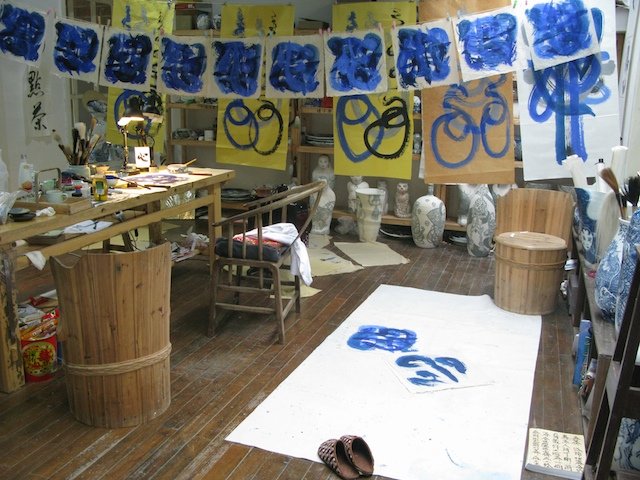BRYAN MULVIHILL “TROLLEY BUS”
Bryan Mulvihill, affectionately known as “Trolley Bus,” a living Vancouver treasure, is a distinguished scholar and artist recognized for his innovative contributions to Asian calligraphy, particularly through his tea ceremonies and “Calligraffiti” works. He began his journey into the art of Chinese ink brush painting at the age of 10, studying under Master Lloyd Yee at Universal Arts, a small shop located on Pender Street in Vancouver's Chinatown, directly across from what is now the Sun Yat Sen Gardens. Master Yee, an authority on the esteemed ‘Mustard Seed Garden Manual’—a foundational document in traditional Chinese painting—imparted essential techniques that encompass the entirety of Chinese landscape painting. This formative apprenticeship laid the groundwork for Bryan's extensive studies in Fine Arts and Asian Art History.
His academic foundation is robust, having earned a BFA in Fine Arts with a focus on Asian and Modern Art History and Buddhist Studies from the University of British Columbia. His scholarly pursuits extended to the Tibetan and Trans-Himalayan collections at the British Museum, where he served as a Reader and Research Fellow at SOAS. Further research took him to the Library and Archives of the Dalai Lama in Dharamsala, India, where he immersed himself in Tibetan cultural and ritual traditions. Returning to UBC, he explored Buddhist iconography in West Coast North American Art, followed by studies in sound related to Buddhist Iconography at Simon Fraser University under composer Martin Bartlet.
Bryan’s artistic practice is deeply rooted in a lifelong study of traditional Chinese ink brush painting and the tea traditions of Asia, alongside the contemplative practices of Buddhist and Taoist masters. His experiences have opened numerous doors into appreciating the intricate interconnections of various art forms, viewing them as paths that illuminate the inner workings of human consciousness and our evolving relationships with nature through cultural traditions. Specializing in Chan/Zen calligraphy, Bryan emphasizes that the state of mind is essential to the ‘Way of the Brush.’ He travelled extensively in Asia, immersing himself in the practices of mind training, art, and the tea ceremony.
A significant aspect of Bryan's work, presented at ADDITION, features Chinese characters written in four directions, creating a mandala effect that allows for dynamic interaction. His Calligraffiti employs 'Cut-Up' and 'Permutation' processes that result in works which may appear abstract but are rich with meaning and specific references. The term 'Calligraffiti' was coined by Brion Gysin, the famous Canadian Beat artist, who developed permutation methods that liberate language from its linear associations. Gysin encouraged Bryan to explore these processes using significant bodies of text—particularly Chan/Zen texts from great masters of the past. In doing so, Bryan utilizes permutation processes to transform Chinese characters into self-generating grid patterns that allow viewers to enter a space of primordial awareness.
Integral to Bryan's artistic philosophy is the character ‘Chung,’ which signifies the ‘right way’ or path. The concept is rooted in both Taoist and Buddhist traditions and is echoed in the ancient writings of the I-Ching, an influential text that discusses the principles of change and existence. In the I-Ching, the notion of being “in the middle” underscores the importance of awareness and navigating life’s complexities, which is central to Bryan's artistic exploration and expression.
The use of permutation invites viewers into a suspended state of awareness, similar to a meditative state. When encountering a work of art, the mind typically assigns a name to the experience and moves on; however, Bryan’s Calligraffiti encourages a state of visual engagement devoid of the distractions associated with specific naming processes, fostering an open state of awareness. This embodiment of Chan/Zen principles aligns with the intention behind traditional tea art forms, which strive to cultivate focused tranquillity through a deep respect for the traditions of the past, the tools and techniques of art making, and the purity of motivation to share with others.
The works presented at ADDITION are a culmination of Bryan's artistic endeavours completed in 2023 at his Aruna Ghar studio in Defence Colony, New Delhi. Utilizing thick, handmade cotton paper, these pieces are enhanced by pigments sourced from a multigenerational vendor in Delhi. These raw minerals interact in unexpected ways, requiring careful consideration in their application, resulting in stunning compositions that shift dynamically based on lighting—from the soft glow of moonlight to the bright rays of sunlight—inviting deeper contemplation from viewers.
Beyond his studio practice, Mulvihill is known for his involvement in the World Tea Party, a collaborative, pan-cultural installation exhibited in over 100 locations globally. This archetypal tea salon uses the ritual of tea drinking as a metaphor for dialogue and has been showcased at venues like the Hollywood Bowl (with the Dalai Lama as the chief guest), the National Gallery of Canada, and the Venice Biennale. The World Tea Party functions as a living archive, integrating traditional art forms with digital media and interactive processes.
Mulvihill's artistic influence and dedication to cultural exchange have earned him international acclaim. His early work was showcased at the Mary Frazee Gallery in Vancouver and through international projects like the Image Bank Correspondence Art Mail Lists. His work has been exhibited at prestigious venues, from the Lalit Kala Academie of Art in New Delhi to the Banff Centre for the Arts and Oboro Gallery in Montreal. He has participated in notable projects like "Digital Identities" at Surrey Art Gallery and the Liverpool Biennale. His art continues to engage audiences worldwide, from the Vancouver Winter Olympics Cultural Olympiad to the European Beat Studies Exhibition and the Sharjah Calligraphy Biennial.
Looking ahead, Mulvihill is currently collaborating with MOCA London on "The Word is Art," a project with manifestations planned for Shanghai in the spring of 2026 and potentially London as well. This ongoing engagement with international institutions underscores his commitment to pushing the boundaries of calligraphy and fostering cross-cultural dialogue through art.
Bryan Mulvihill's art seamlessly weaves calligraphy with cultural narratives, resonating through diverse artistic and social contexts. He stands as a vital connector of visual arts across borders, bridging cultures through his unique artistic vision.

BestWay Studio, Chinatown, Vancouver

Detail: Bryan Mulvihill, Shin Heart Mind, Aruna Ghar, New Dehli Studio, 2024, Mineral pigments on handmade cotton rag paper, 24 x 22 in

Bryan Mulvihill, Shin Heart Mind, Aruna Ghar, New Dehli Studio, 2024, Mineral pigments on handmade cotton rag paper, 24 x 20 in

Bryan Mulvihill, I’Shi Stone, a mouth under a cliff fundamental particle, Homage to Wang Xi Shi, Tong Dynasty, Aruna Ghar, New Dehli Studio, 2023, Mineral pigments on handmade cotton rag paper, 24 x 22 in

Bryan Mulvihill, Chung Middle Way, Aruna Ghar, New Dehli Studio, 2024, Mineral pigments on handmade cotton rag paper, 24 x 22 in

Bryan Mulvihill, Chung, Middle Way Center, Homage to Shinzan Mayame Roshi, Aruna Ghar, New Dehli Studio, 2024, Mineral pigments on handmade cotton rag paper, 24 x 22 in

Detail: Bryan Mulvihill, Ovio Permutations, Homage to Chogyam Trungpa Tulku IX, Dharma Art Seminar Boulder Colorado, Aruna Ghar, New Dehli Studio, 2024, Mineral pigments on handmade cotton rag paper, 24 x 22 in

Bryan Mulvihill, Ovio Permutations, Homage to Chogyam Trungpa Tulku IX, Dharma Art Seminar Boulder Colorado, Aruna Ghar, New Dehli Studio, 2024, Mineral pigments on handmade cotton rag paper, 24 x 22 in

Bryan Mulvihill, Sprouts with snake bite, I-Ching Hexigram, Aruna Ghar, New Dehli Studio, 2024, Mineral pigments on handmade cotton rag paper, 24 x 22 in


Bryan Mulvihill, Shin Heart Mind, Homange to Wang Xi Zhin, Aruna Ghar, New Dehli Studio, 2024, Mineral pigments on handmade cotton rag paper, 24 x 22 in

Detail: Bryan Mulvihill, Bone Stroke Permutations, Aruna Ghar, New Dehli Studio, 2024, Mineral pigments on handmade cotton rag paper, 24 x 22 in

Bryan Mulvihill, Chung Middle Center Homage to Haikuin, Aruna Ghar, New Dehli Studio, 2024, Mineral pigments on handmade cotton rag paper, 24 x 22 in

Bryan Mulvihill, Ichi go Ichi I calligraphy, in Skid Row Teahouse, Vancouver
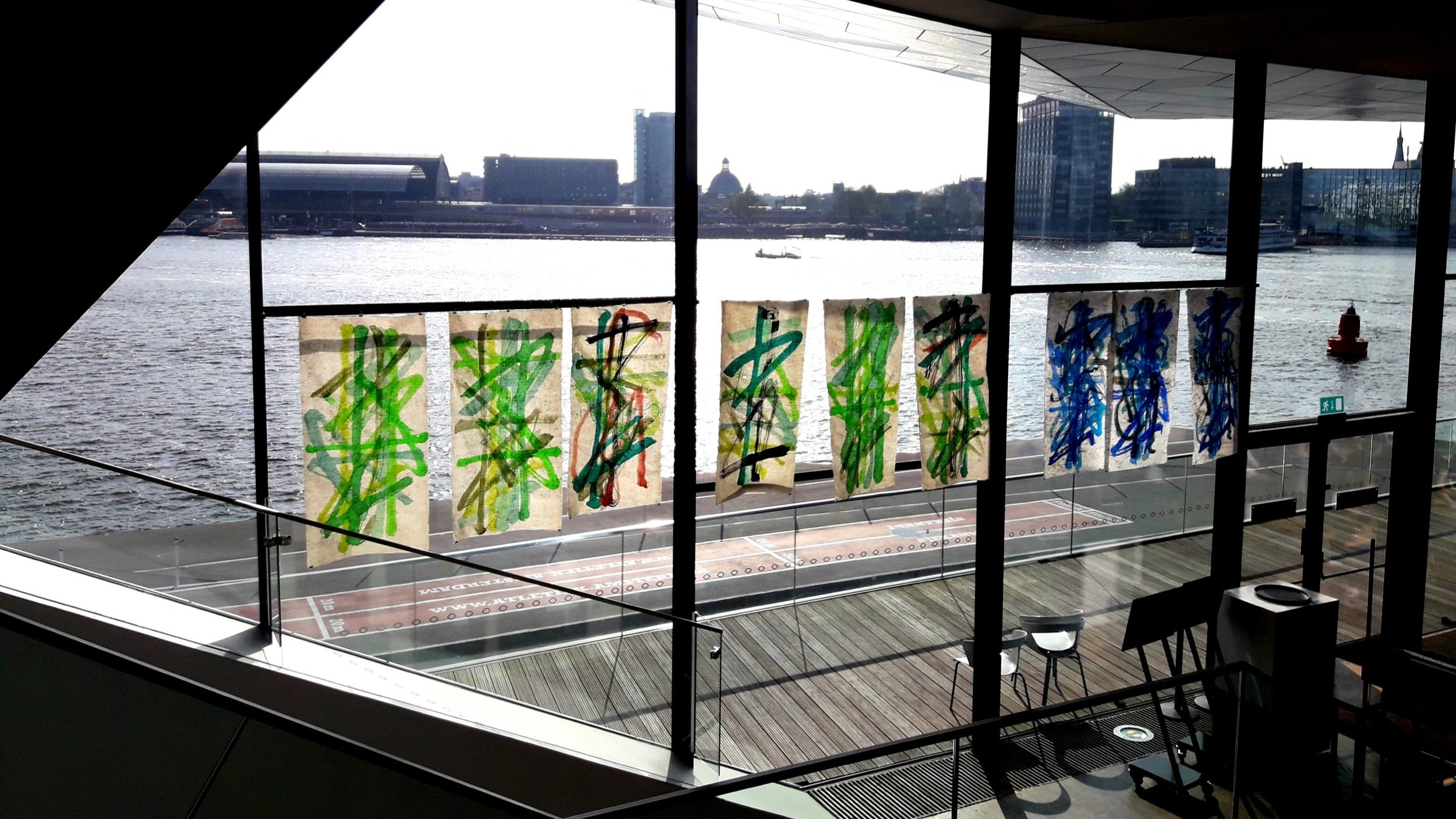
Calligraffiti at BFFE at EYE Film Archive Museum, Amsterdam, 2017

Calligraffiti at BFFE at EYE Film Archive Museum, Amsterdam, 2017

Bryan Mulvihill, Sitting Quitely End in the Times Calligraffiti on Handspun Khadi cotton Dhoti, Chajin Exhibition, Dr. Sun Yat-Sen Classical Chinese Garden, Vanouver
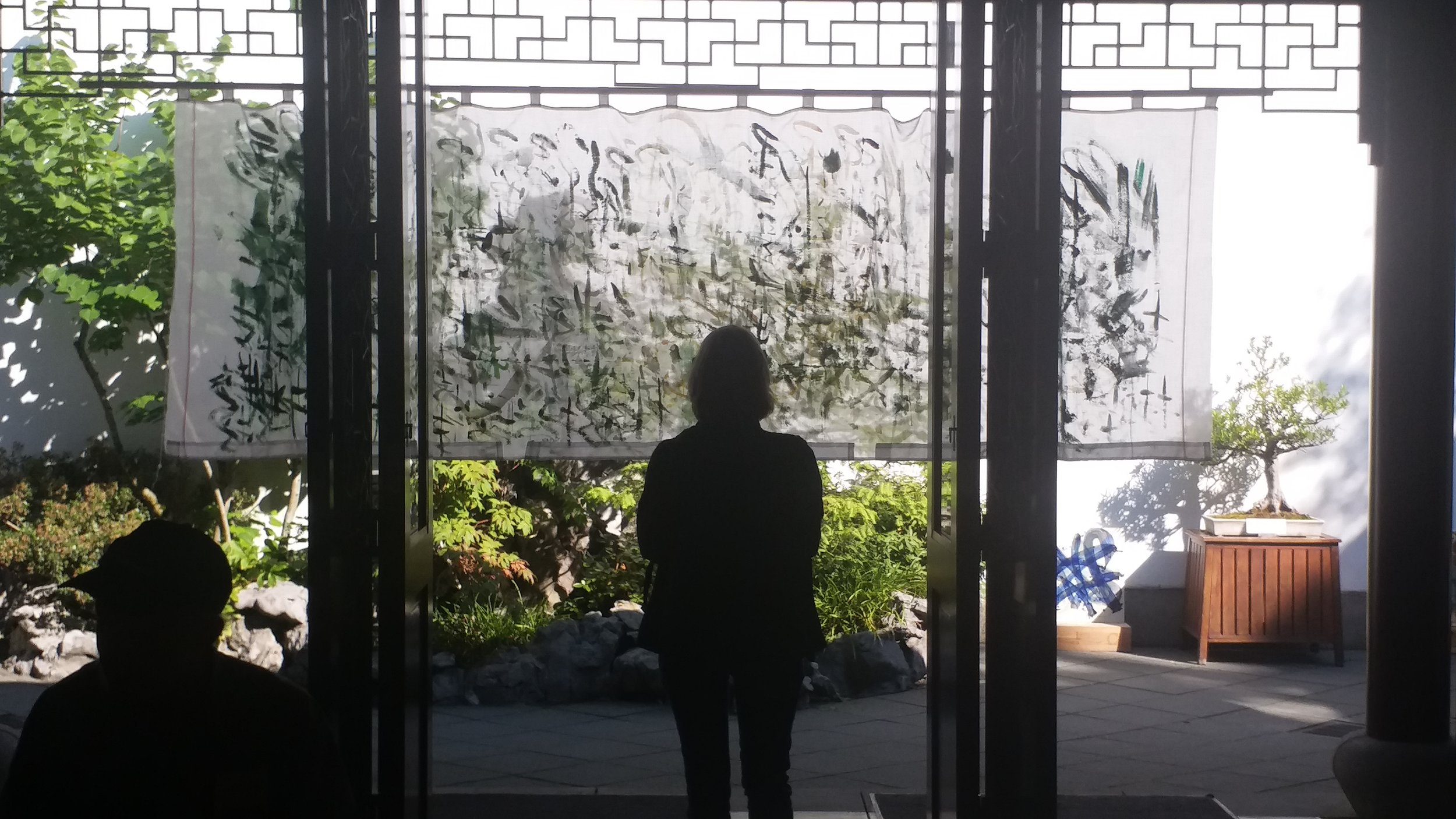
Calligraffiti in Chajin Exhibition Dr Sun Yat Sen Chinese garden, Vancouver

Bryan Mulvihill, Harmony calligraffiti on Porcelain, Chajin Exhibition, Dr. Sun Yat-Sen Chinese garden, Vancouver
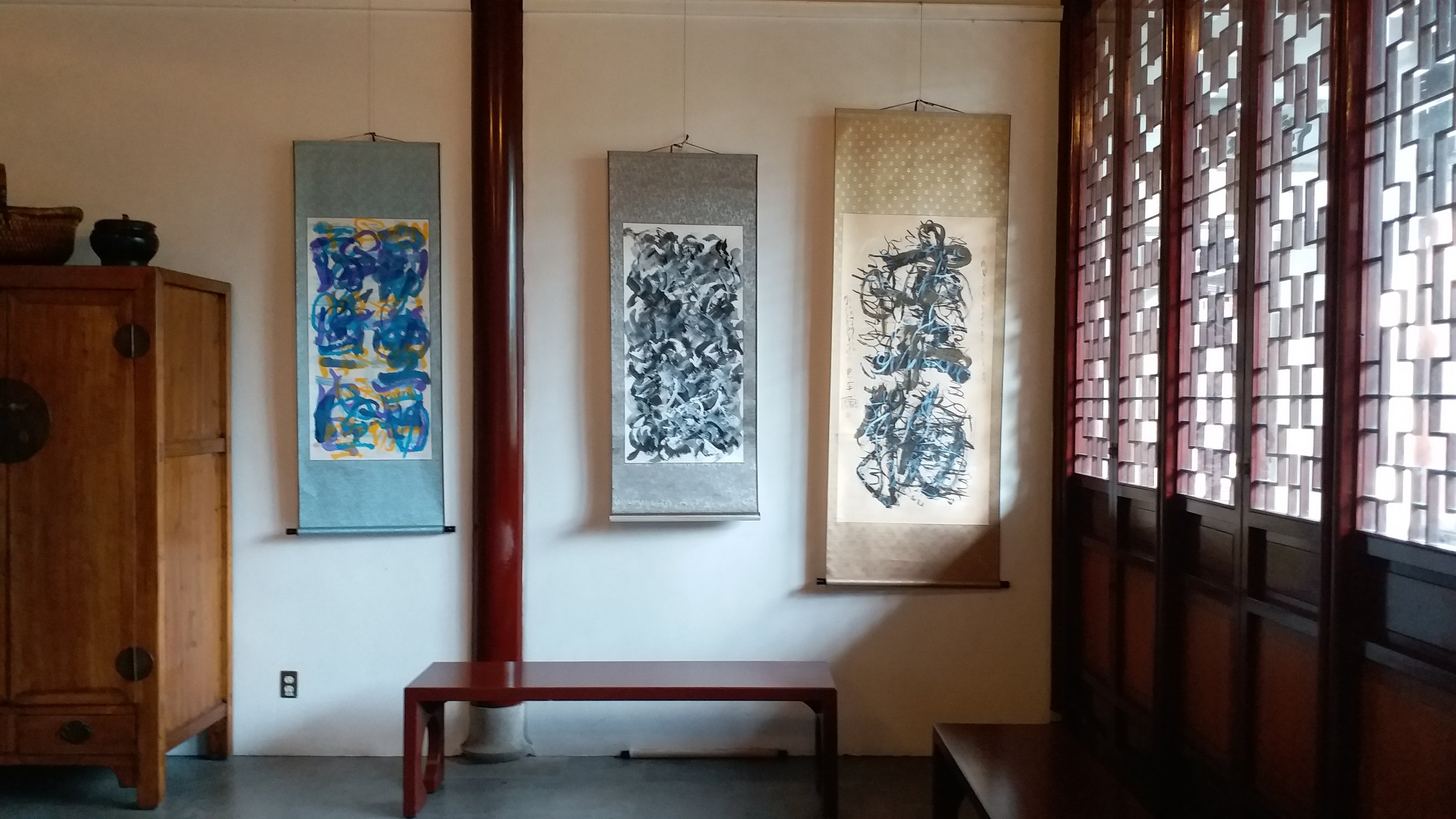

Door Stone studio, Sechelt Inlet, 2021


Calligraffiti Sanbao (3 Treasures) Studio, Jingdezhen, China, 2011- 15
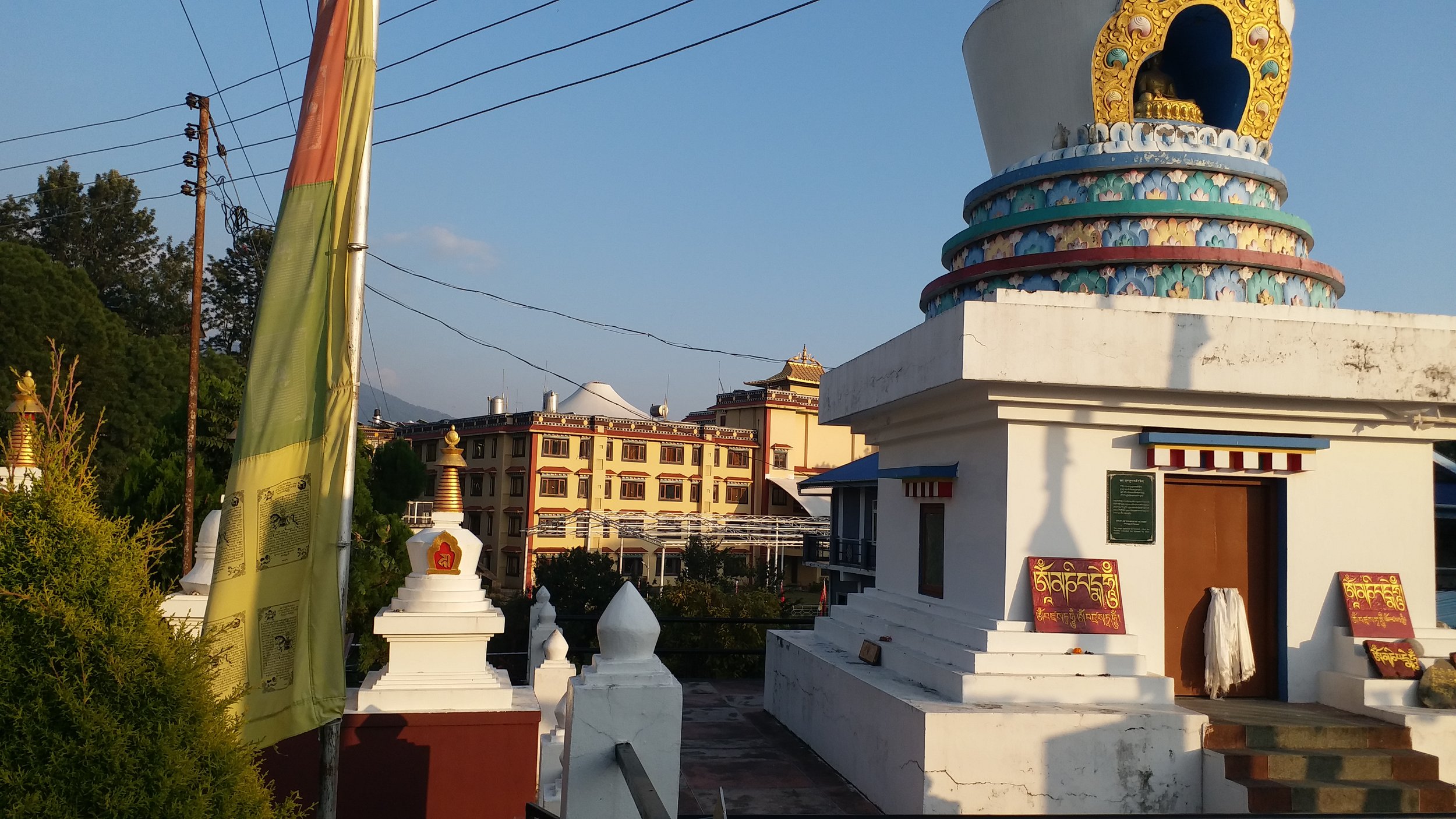
Sherabling Monastic University, Kangra Himachal Pradesh, India

Sherabling Monastic University, Kangra Himachal Pradesh, India

Can Macia De Dalt studio, Torrelles de Llobergat, Barcelona, Spain

Can Macia De Dalt studio, Torrelles de Llobergat, Barcelona
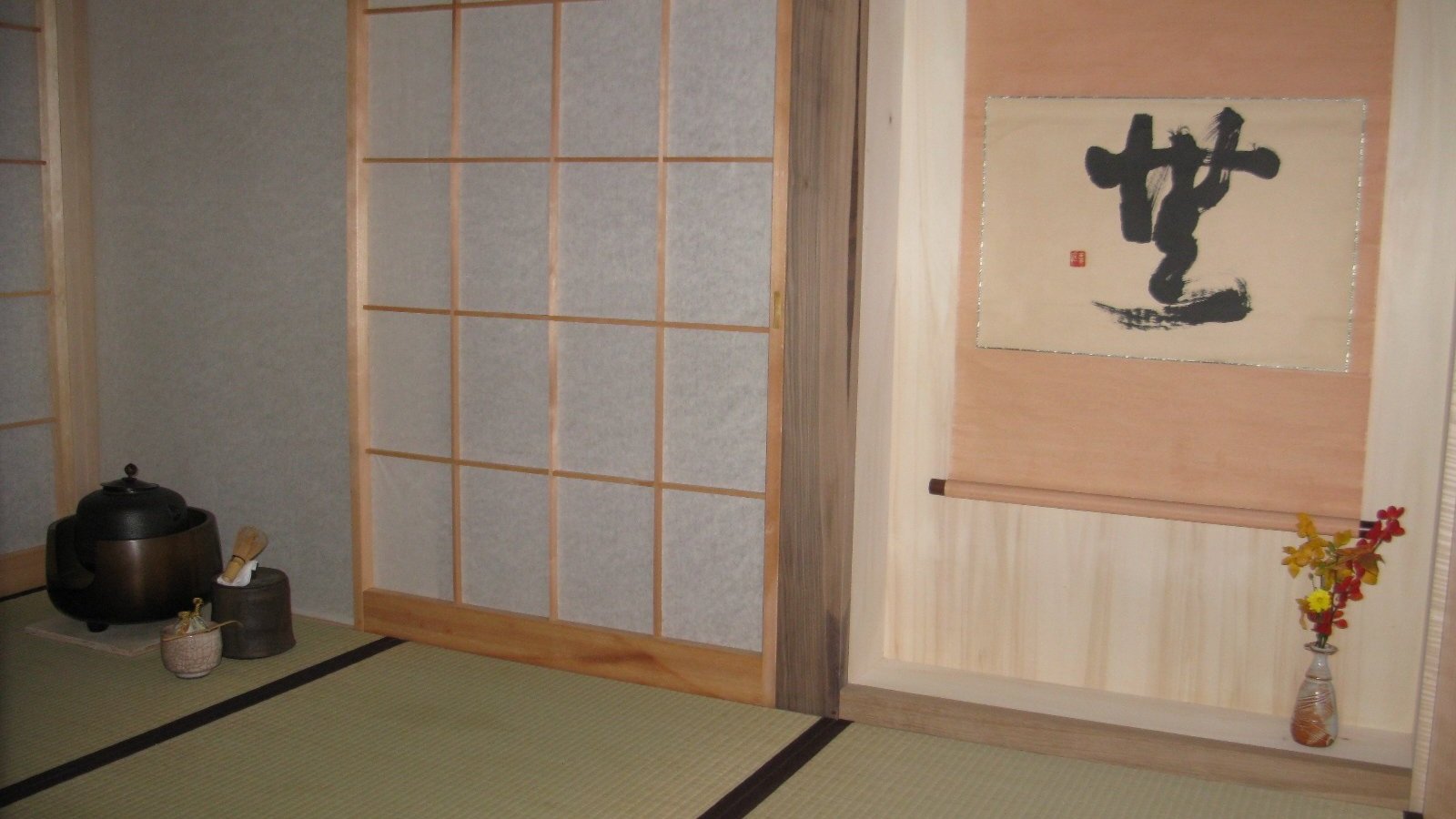
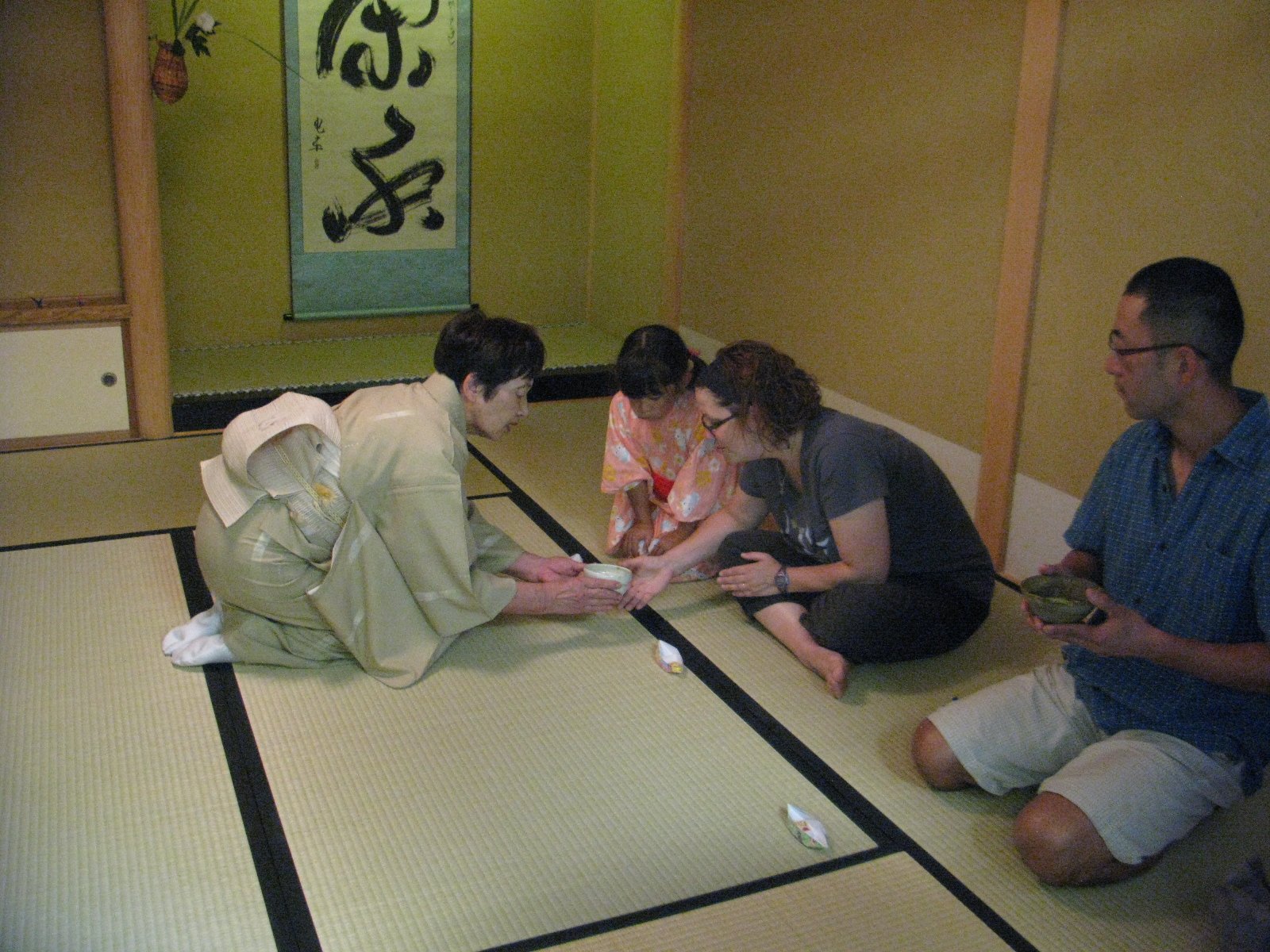
O'bon Festival tea gathering at Tozneji Temple tea ceremony, Japan, 2015
